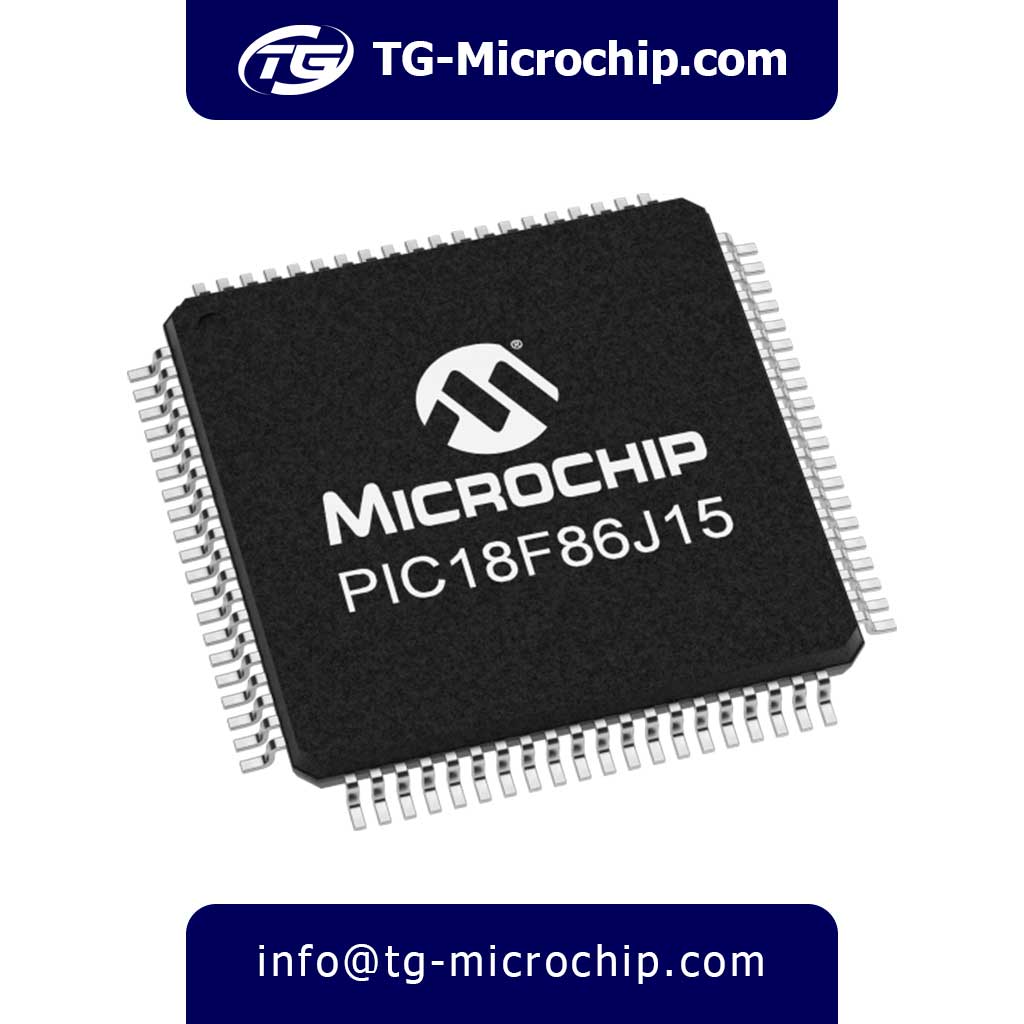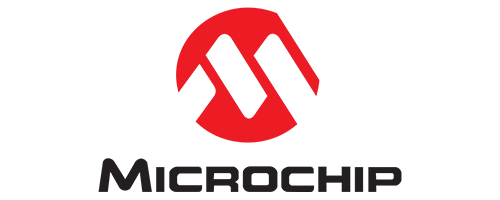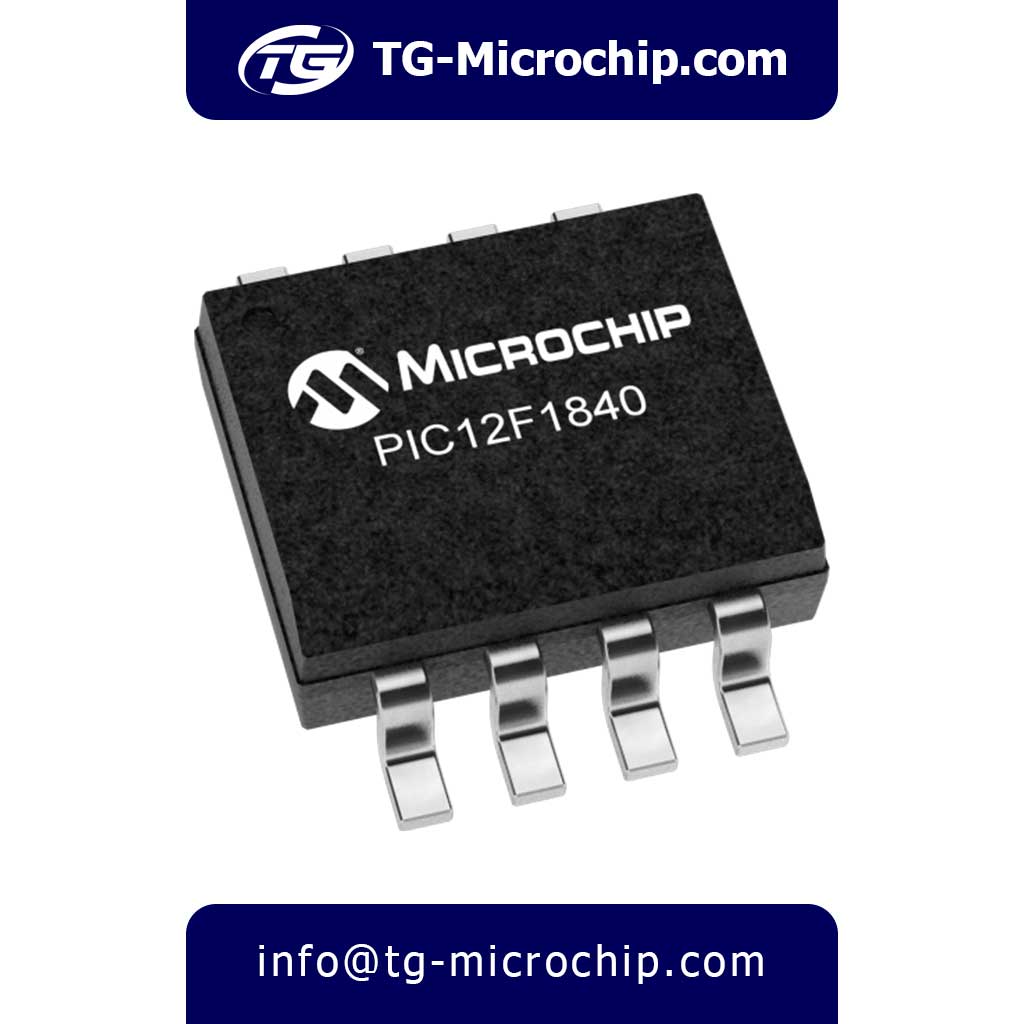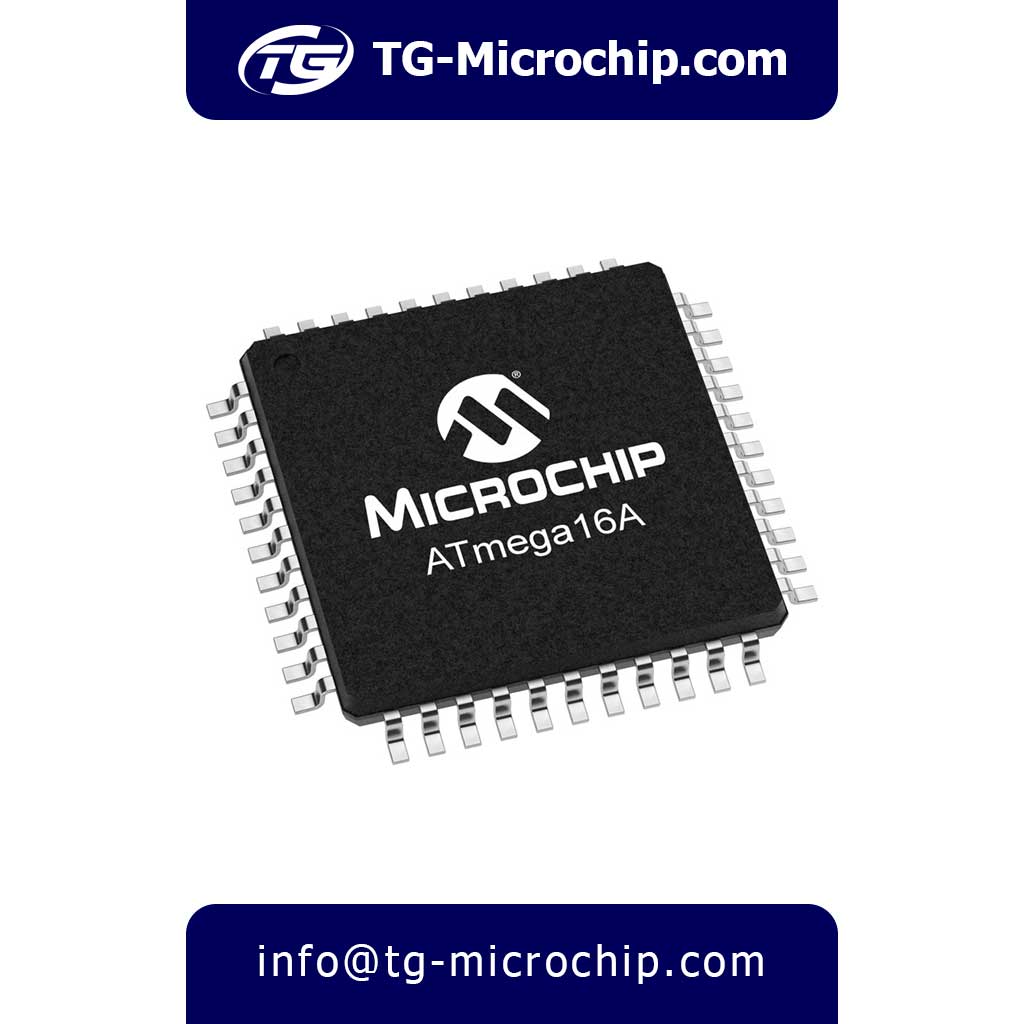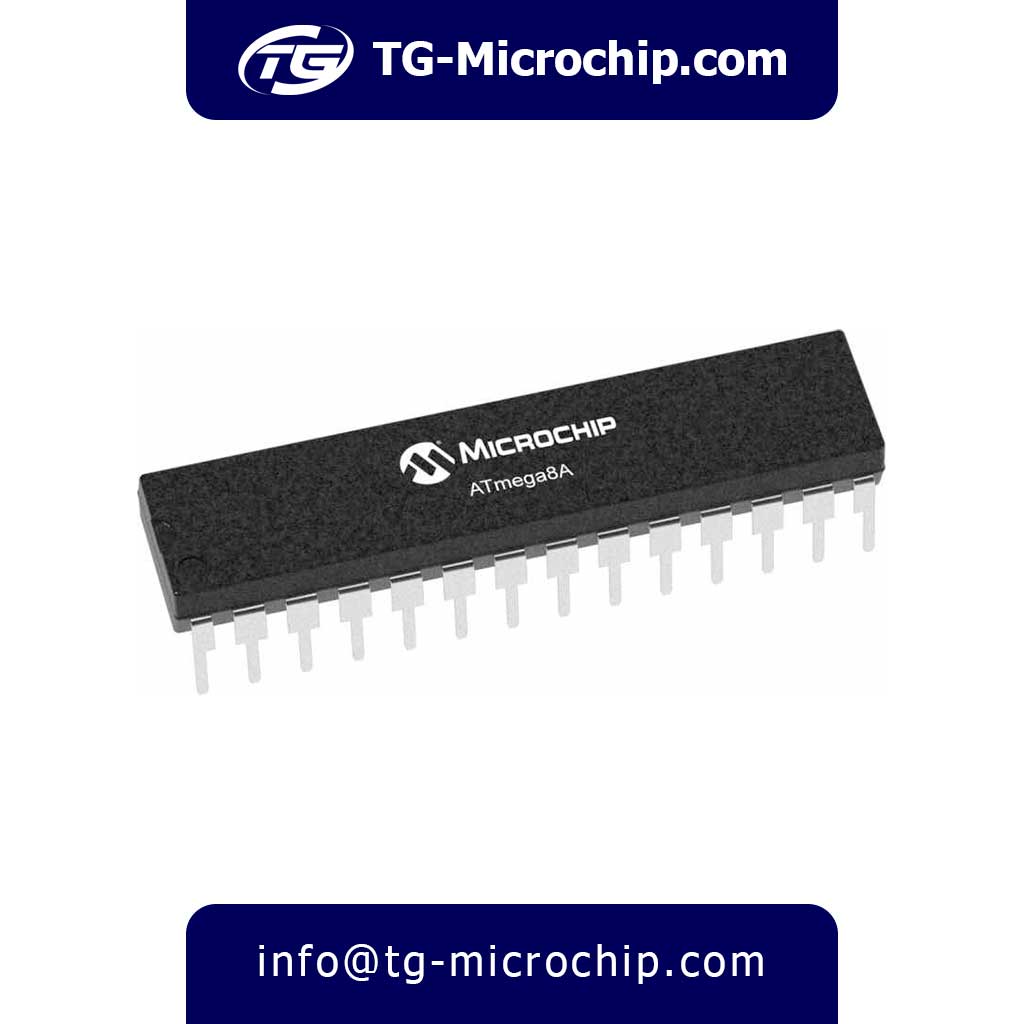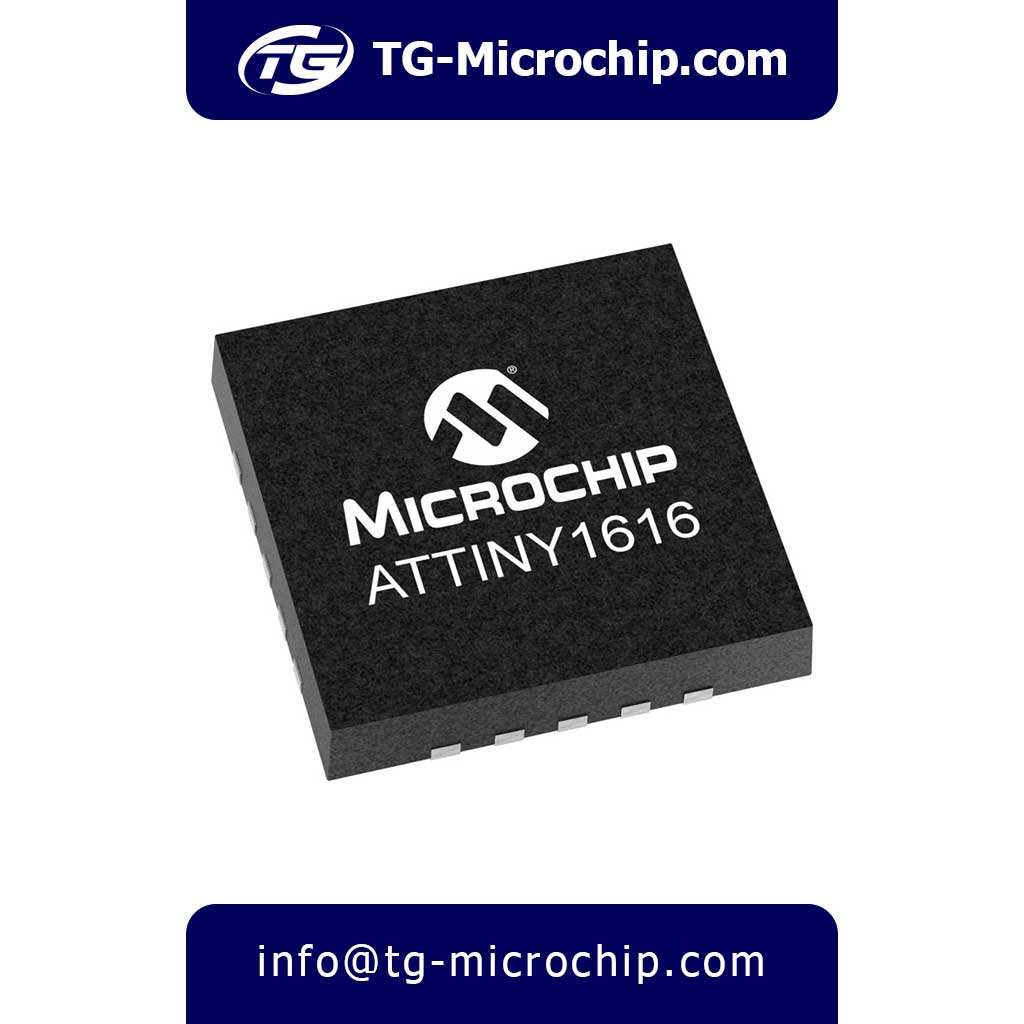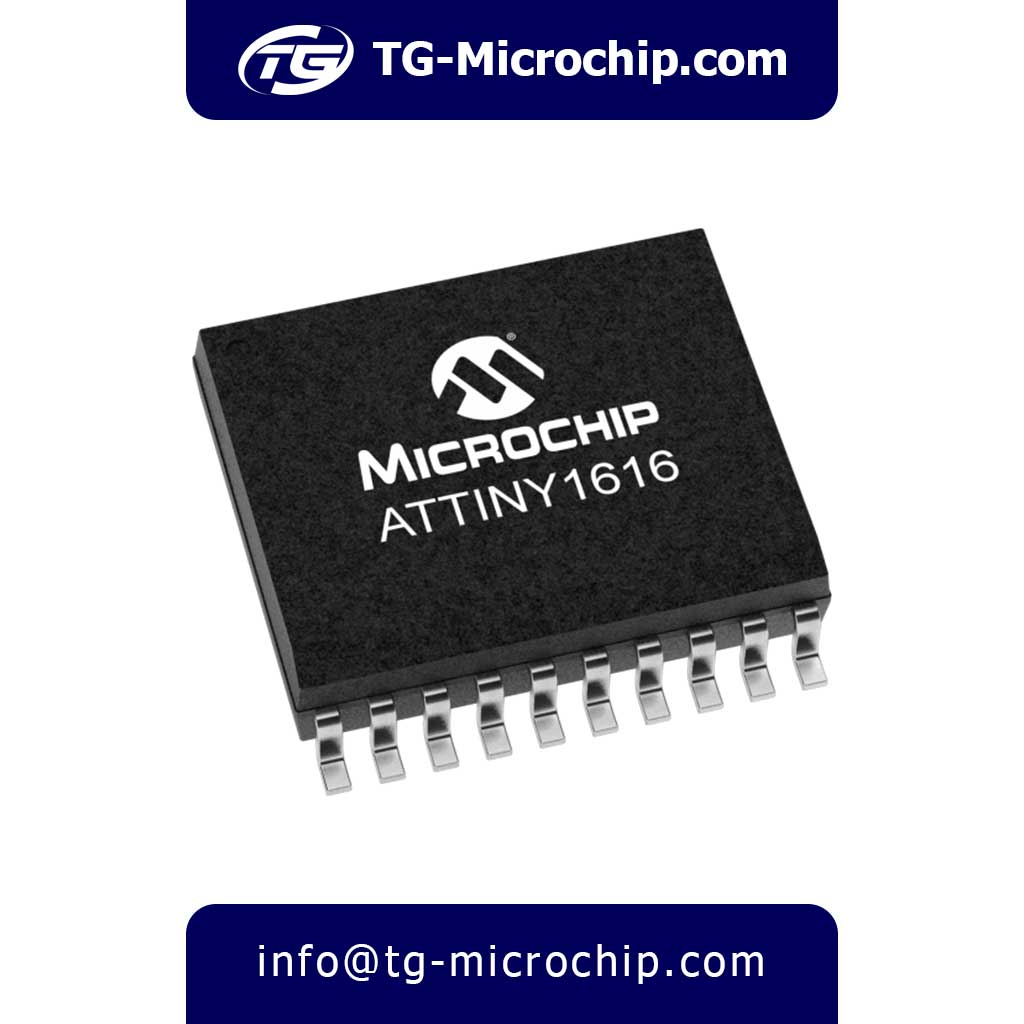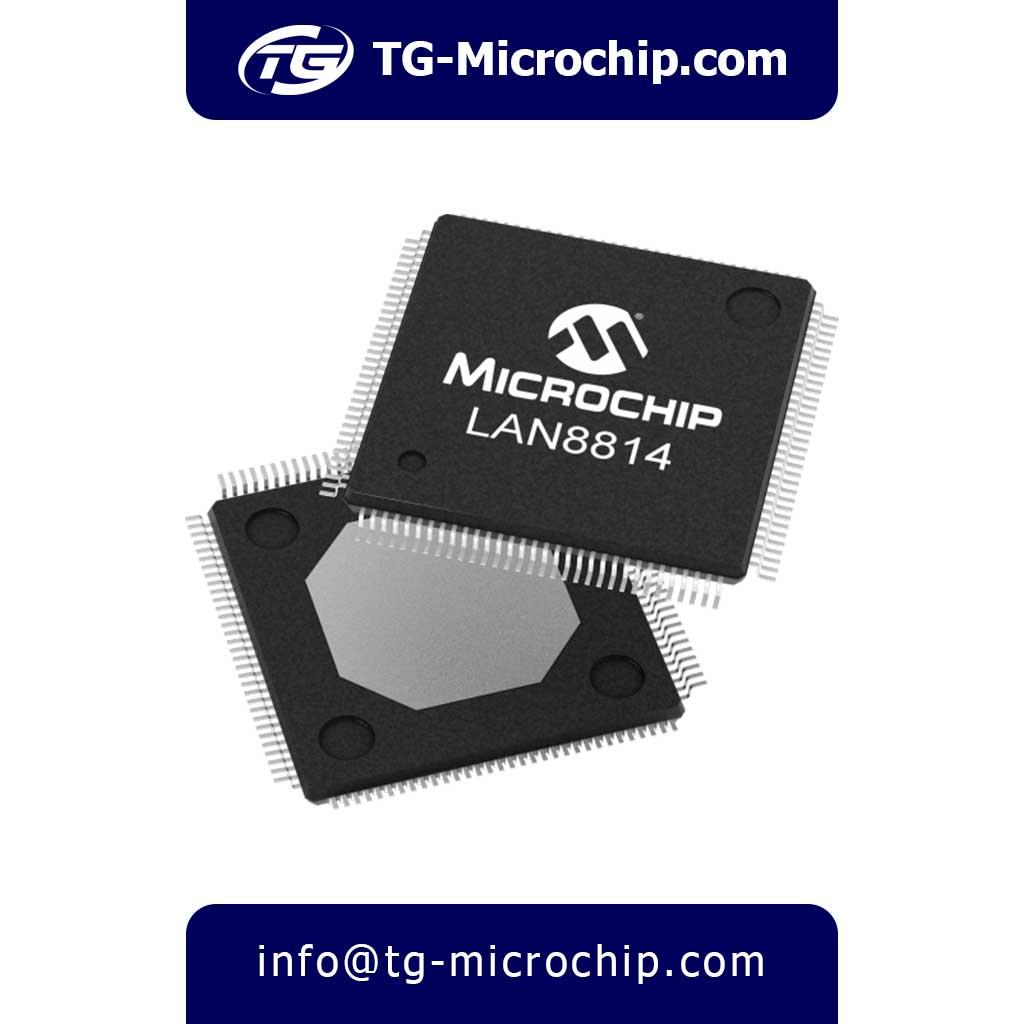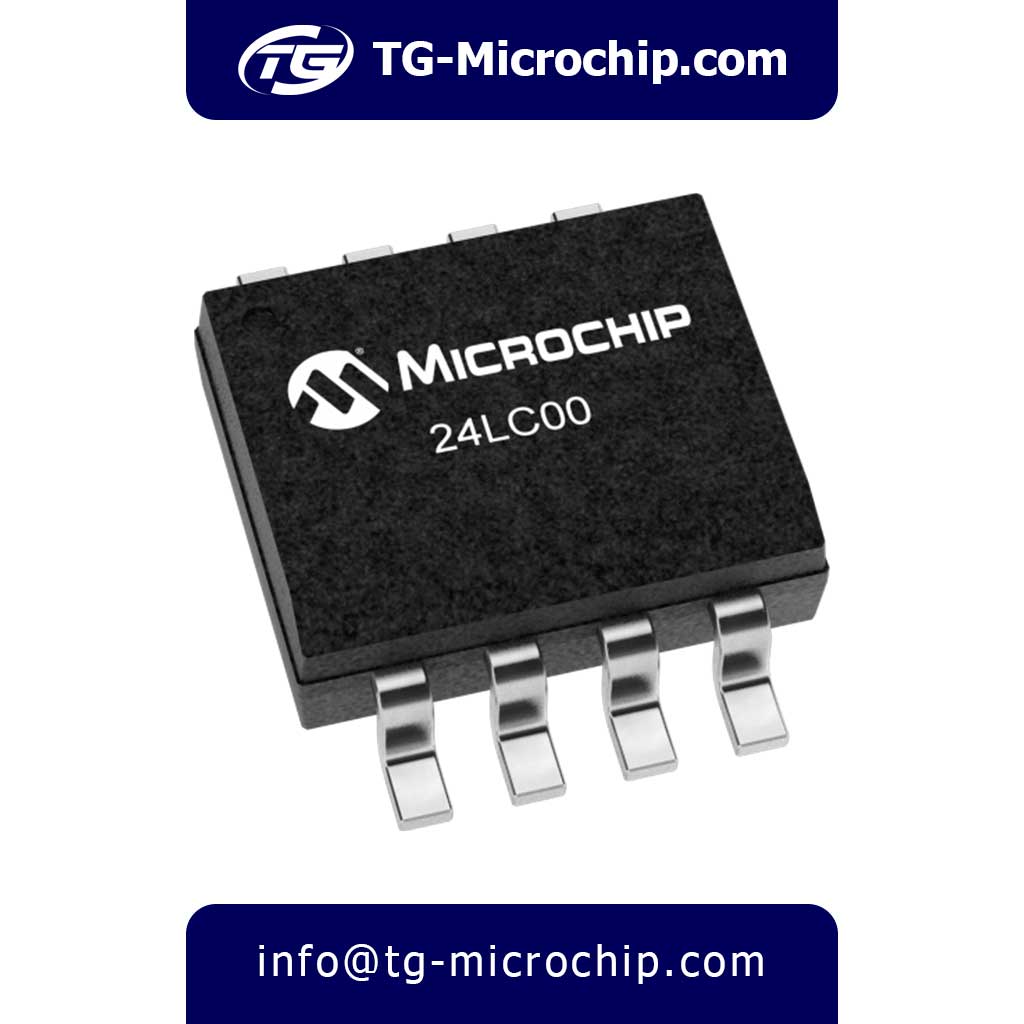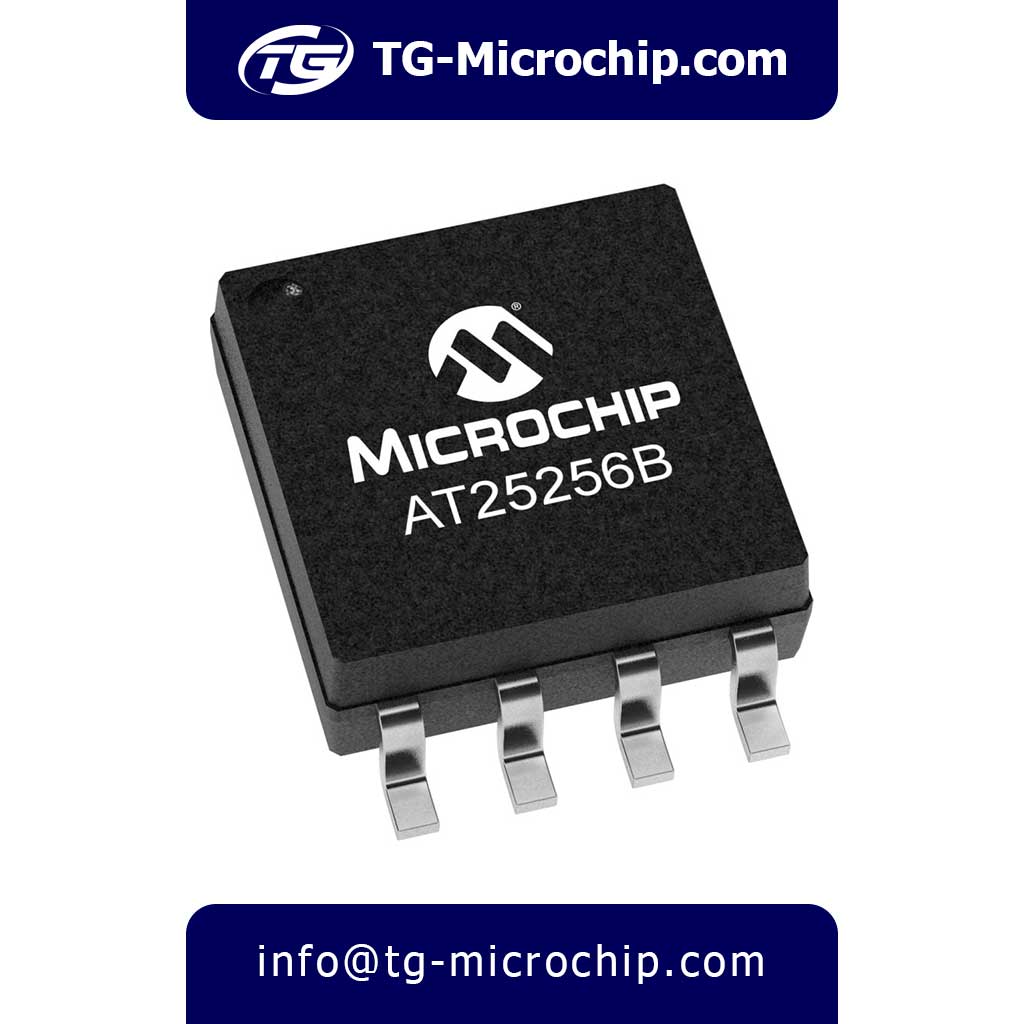For order or price inquiry of PIC18F86J15-I/PT Microchip Technology / Atmel – 8-bit Microcontroller – MCU, Please click on Buy Order button and fill the RFQ form we will check out inventory and offer you our best price .
Quick Access
About
The PIC18F86J15-I/PT is an 8-bit microcontroller from Microchip Technology, belonging to the PIC18FJ1x series within the broader PIC18 family. It is designed for high-performance embedded applications, featuring a modified Harvard RISC architecture with a 40 MHz max operating frequency, delivering 10 MIPS (Million Instructions Per Second) performance. This MCU is optimized for low-power operation, incorporating nanoWatt XLP technology, making it suitable for battery-powered and energy-efficient devices.
The microcontroller includes 96 KB of Flash program memory, 3.84 KB of SRAM, and 1 KB of EEPROM for data storage, providing ample space for firmware and runtime variables. It supports 66 programmable I/O pins, with 15 channels of 10-bit ADC for precise analog signal acquisition. Additionally, it features two analog comparators, multiple timers (including PWM support), and hardware-based communication interfaces such as EUSART, SPI, and I²C, enabling seamless connectivity with sensors, displays, and other peripherals.
A key strength of the PIC18F86J15-I/PT is its versatile power management, operating within a 2.0V to 3.6V range, making it ideal for low-voltage applications. It includes multiple power-saving modes, with sleep currents as low as 100 nA, extending battery life in portable devices. The MCU also integrates robust reset mechanisms, including Power-on Reset (POR), Brown-out Reset (BOR), and Watchdog Timer (WDT), ensuring reliable operation in harsh environments.
The device comes in an 80-pin TQFP (Thin Quad Flat Pack) package, designed for surface-mount assembly in space-constrained PCB designs. It supports In-Circuit Serial Programming (ICSP) for easy firmware updates and debugging. With an industrial-grade operating temperature range (-40°C to +85°C), it is well-suited for automotive, industrial automation, and IoT applications where reliability under extreme conditions is critical.
In summary, the PIC18F86J15-I/PT is a highly integrated, low-power 8-bit MCU with a rich set of peripherals, making it a strong choice for developers needing real-time control, sensor interfacing, and connectivity in embedded systems. Its combination of performance, energy efficiency, and robustness positions it as a competitive solution in the PIC18 microcontroller lineup.
Key Features
Core Architecture:
- 8-bit enhanced PIC18 RISC CPU core
- Modified Harvard architecture with 16-bit wide instructions
- 75 optimized instructions (including hardware multiply)
- 32-level deep hardware stack
- 8×8 single-cycle hardware multiplier
Memory Configuration:
- 96KB (64K x 12) Flash program memory
- 100,000 erase/write cycle endurance (typical)
- 3.84KB (3,840 bytes) data SRAM memory
- 1KB (1024 bytes) EEPROM data memory
- 1,000,000 erase/write cycle endurance (EEPROM)
Clock System:
- Internal oscillator block:
- 8 MHz nominal frequency (±1% accuracy)
- Software selectable frequencies (31 kHz to 8 MHz)
- 4x Phase Lock Loop (PLL) frequency multiplier
- External oscillator support up to 40 MHz
- Fail-Safe Clock Monitor (FSCM) for clock detection
Analog Features:
- 15-channel 10-bit Analog-to-Digital Converter (ADC)
- 1.2 μs conversion time
- Programmable acquisition time
- Voltage reference input channels
- Two analog comparators with:
- Programmable input/output configuration
- External/internal reference selection
- Wake-up from Sleep on change
Digital Peripherals:
- 66 digital I/O pins (5V tolerant)
- Individually programmable pull-up resistors
- Interrupt-on-change capability
- Slew rate control on outputs
- Peripheral Pin Select (PPS) functionality
Timing Modules:
- Four 8-bit timers (Timer0-Timer3)
- Three 16-bit timers (Timer4-Timer6)
- Capture/Compare/PWM (CCP) modules:
- 16-bit capture resolution (12.5 ns)
- 16-bit compare resolution
- 10-bit PWM resolution
- Two Enhanced CCP (ECCP) modules with:
- Half-bridge and full-bridge output modes
- Multiple PWM output modes
- Auto-shutdown and restart
Communication Interfaces:
- 2x Enhanced USART modules (EUSART) with:
- LIN bus support
- IrDA encoder/decoder
- Auto-baud detection
- Master Synchronous Serial Port (MSSP) module supporting:
- SPI (up to 10 Mbps)
- I²C (Master/Slave, up to 1 MHz)
- Parallel Slave Port (PSP) for processor communication
Power Management:
- Operating voltage range: 2.0V to 3.6V
- Multiple power-saving modes:
- Run
- Idle
- Sleep
- nanoWatt XLP technology for ultra-low power:
- Sleep current down to 100 nA (typical)
- Timer1 oscillator current: 600 nA @ 32 kHz
- Watchdog Timer current: 400 nA
- Two-Speed Start-up mode
System Features:
- Multiple reset sources:
- Power-on Reset (POR)
- Brown-out Reset (BOR)
- Watchdog Timer (WDT)
- MCLR Reset
- Stack Overflow/Underflow Reset
- Programmable Brown-out Reset voltages
- Extended Watchdog Timer (WDT) with:
- Dedicated on-chip RC oscillator
- Programmable period from 1ms to 256s
Debugging and Programming:
- In-Circuit Serial Programming (ICSP) via two pins
- In-Circuit Debug (ICD) support
- Breakpoint capability
- Run-time self-programming of Flash memory
- Read/write access to all memory
Physical Characteristics:
- 80-pin TQFP package (12mm x 12mm body)
- Industrial temperature range: -40°C to +85°C
- ESD protection on all pins (>4kV)
- Latch-up resistant design
Security Features:
- Code protection with multiple security levels
- Flash memory read/write protection
- Unique ID locations
- Device information area
Special Functionality:
- Configurable clock switching
- Clock output capability
- Peripheral Module Disable (PMD) control
- Device Information Area (DIA) with calibration data
- Fixed Voltage Reference (FVR) module
Applications
1. Industrial Automation & Control Systems
- Programmable Logic Controllers (PLCs) – Used for logic control, sequencing, and monitoring in factory automation.
- Motor Control – Drives DC/stepper motors via PWM (Pulse-Width Modulation) and ECCP modules.
- Sensor Interfaces – Processes signals from temperature, pressure, and flow sensors via its 15-channel 10-bit ADC.
- Human-Machine Interfaces (HMIs) – Controls touch panels and display modules via SPI/I²C.
2. Internet of Things (IoT) & Smart Devices
- Wireless Sensor Nodes – Low-power operation (100 nA sleep mode) makes it ideal for battery-powered IoT sensors.
- Smart Home Devices – Controls smart lighting, thermostats, and security systems.
- Environmental Monitoring – Logs data from air quality, humidity, and gas sensors.
- Asset Tracking – Used in GPS and RFID-based tracking systems.
3. Consumer Electronics
- Home Appliances – Embedded in washing machines, microwaves, and coffee makers for control logic.
- Remote Controls – Supports IR communication via EUSART modules.
- Wearable Devices – Powers fitness trackers and health monitors due to low-power modes.
- Gaming Peripherals – Used in joysticks and interactive controllers.
4. Automotive & Transportation
- Engine Control Units (ECUs) – Manages fuel injection and ignition timing.
- Dashboard Displays – Drives LCD clusters and infotainment systems.
- Battery Management Systems (BMS) – Monitors voltage, current, and temperature in EVs.
- CAN Bus Communication – Interfaces with vehicle networks (via external transceivers).
5. Medical & Healthcare Devices
- Patient Monitoring Systems – Processes ECG, SpO2, and blood pressure sensor data.
- Portable Diagnostic Tools – Used in glucometers and pulse oximeters.
- Infusion Pumps – Controls fluid delivery with precision PWM.
- Wearable Health Tech – Powers heart rate monitors and fall detection devices.
6. Embedded Communication Systems
- RS-232/485 Interfaces – Enables industrial serial communication via EUSART.
- Modbus & LIN Bus Devices – Used in industrial automation and automotive networks.
- Wireless Gateways – Acts as a bridge between Zigbee/Bluetooth and wired networks.
7. Power Management & Energy Systems
- Solar Charge Controllers – Regulates battery charging in solar panels.
- Smart Meters – Measures electricity/water consumption with high ADC accuracy.
- Uninterruptible Power Supplies (UPS) – Manages battery backup and voltage regulation.
8. Robotics & Mechatronics
- Servo Motor Control – Uses PWM & timers for precise positioning.
- Autonomous Drones – Processes gyroscope/accelerometer data.
- CNC Machines – Controls stepper motors for precision machining.
9. Security & Access Control
- Biometric Scanners – Interfaces with fingerprint & RFID readers.
- Surveillance Systems – Processes PIR motion sensor inputs.
- Smart Locks – Manages keypad & Bluetooth unlocking.
10. Test & Measurement Equipment
- Digital Multimeters – Provides signal conditioning & ADC processing.
- Oscilloscopes – Logs waveform data via high-speed sampling.
- Data Loggers – Stores environmental/industrial sensor readings in EEPROM.
Conclusion
The PIC18F86J15-I/PT is a highly flexible microcontroller suitable for industrial, consumer, medical, automotive, and IoT applications. Its low-power operation, robust peripherals, and real-time control capabilities make it a preferred choice for embedded system designers.
Advantages
1. Superior Power Efficiency for Battery-Powered Applications
The PIC18F86J15-I/PT incorporates nanoWatt XLP (eXtreme Low Power) technology, enabling ultra-low power consumption in active and sleep modes. With sleep currents as low as 100 nA and multiple power-down modes, it significantly extends battery life in portable and energy-sensitive applications. The wide 2.0V–3.6V operating range allows operation from coin cell batteries or low-voltage power sources, making it ideal for IoT sensors, wearables, and remote monitoring devices.
2. High-Performance 8-Bit Processing with Real-Time Control
Despite being an 8-bit MCU, it delivers 10 MIPS performance at 40 MHz, making it suitable for real-time control applications such as motor control, industrial automation, and embedded systems. The hardware multiplier accelerates mathematical operations, while multiple priority-level interrupts ensure responsive handling of time-critical tasks. The modified Harvard architecture with a 32-level deep stack enhances code efficiency and execution speed.
3. Robust Analog and Digital Integration
The microcontroller integrates 15 channels of 10-bit ADC with fast 1.2 µs conversion time, enabling precise sensor measurements in medical, automotive, and industrial applications. The inclusion of two analog comparators with programmable references eliminates the need for external components, reducing BOM cost. Additionally, 66 I/O pins with 5V tolerance provide extensive connectivity for interfacing with sensors, displays, and communication modules.
4. Enhanced Reliability for Industrial and Harsh Environments
Designed for industrial-grade operation (-40°C to +85°C), the MCU ensures stable performance in extreme conditions. It features multiple reset sources (POR, BOR, WDT) and a Fail-Safe Clock Monitor (FSCM) to prevent system lock-ups. The latch-up-resistant design and ESD protection (>4kV) enhance durability in electrically noisy environments, making it suitable for automotive, factory automation, and outdoor embedded systems.
5. Simplified Development and Firmware Updates
With In-Circuit Serial Programming (ICSP) and In-Circuit Debug (ICD) support, developers can easily program and troubleshoot without removing the chip from the circuit. The self-programmable Flash memory allows field firmware updates, enabling remote maintenance and feature upgrades. Microchip’s MPLAB X IDE and extensive code libraries further accelerate development, reducing time-to-market for embedded projects.
6. Cost-Effective Solution with High Integration
The PIC18F86J15-I/PT eliminates the need for external components by integrating EEPROM, ADC, comparators, oscillators, and voltage references on-chip. This reduces PCB complexity and overall system cost while maintaining high performance. Its 80-pin TQFP package offers a compact footprint, ideal for space-constrained designs without sacrificing functionality.
7. Future-Proof Security and Flexibility
The MCU includes advanced security features such as code protection, Flash memory lock, and unique ID storage, preventing unauthorized access and firmware theft. The Peripheral Pin Select (PPS) functionality allows flexible I/O mapping, simplifying PCB routing and enabling last-minute design changes without hardware modifications.
Conclusion
The PIC18F86J15-I/PT stands out as a versatile, power-efficient, and reliable 8-bit microcontroller, offering superior analog integration, real-time performance, and robust industrial durability. Its combination of low power, high integration, and development flexibility makes it an excellent choice for IoT, industrial control, automotive, and consumer electronics applications.
Specifications
| Parameter | Specification |
|---|---|
| Manufacturer | Microchip Technology |
| Series | PIC18FxxJ15 |
| Core Architecture | 8-bit PIC18 (Modified Harvard RISC) |
| Instruction Set | 75 instructions, 16-bit wide |
| Speed | Up to 40 MHz (10 MIPS @ 40 MHz) |
| Flash Memory (Program) | 96 KB (64K x 12) with self-read/write capability |
| SRAM | 3.84 KB |
| EEPROM | 1 KBs (data storage) |
| Digital I/O Pins | 66 (5V-tolerant, programmable pull-ups) |
| Analog Inputs (ADC) | 15 channels × 10-bit (1.2 µs conversion time) |
| Analog Comparators | 2x (with programmable reference) |
| Timers | 4x 8-bit, 3x 16-bit (Timer0-3, supports capture/compare/PWM) |
| PWM Modules | 2x Enhanced CCP (ECCP) (up to 10-bit resolution) |
| Communication Interfaces | 1x SPI, 1x I²C (MSSP), 2x UART (EUSART) |
| DMA Channels | None (Direct Memory Access not supported) |
| Operating Voltage | 2.0V – 3.6V (low-power operation) |
| Current Consumption (Active) | ~8 mA @ 40 MHz, ~200 µA @ 32 kHz (typical) |
| Power-Down Current (Sleep) | ~100 nA (with nanoWatt XLP technology) |
| Reset Sources | Power-on Reset (POR), Brown-out Reset (BOR), Watchdog Timer (WDT), MCLR |
| Clock Sources | Internal (8 MHz ±1%), External (up to 40 MHz), PLL (4x multiplier) |
| Interrupts | Multiple priority levels, up to 3 external + peripheral interrupts |
| Operating Temperature | -40°C to +85°C (Industrial grade) |
| Package Type | 80-TQFP (Thin Quad Flat Pack, 12×12 mm, 0.5 mm pitch) |
| Packaging | Tray / Tube (varies by distributor) |
| Mounting | Surface Mount (SMT) |
| On-Chip Debugging | Yes (In-Circuit Serial Programming – ICSP) |
| Security Features | Code protection, Flash memory lock |
| Peripheral Pin Select (PPS) | No (Fixed pin assignments) |
| RoHS Compliance | Yes (Lead-free, Halogen-free) |
Comparison with Similar Components
1. PIC18F86J15-I/PT vs. PIC18F87J15-I/PT
Key Differences
| Feature | PIC18F86J15-I/PT | PIC18F87J15-I/PT |
|---|---|---|
| Flash Memory | 96 KB | 128 KB |
| RAM | 3.84 KB | 4 KB |
| I/O Pins | 66 | 80 |
| ADC Channels | 15 (10-bit) | 16 (10-bit) |
| Package | 80-TQFP | 100-TQFP |
Summary: The PIC18F87J15 offers more memory and I/O, making it better for larger embedded applications. The PIC18F86J15 is more compact but lacks expandability.
Recommendation:
- PIC18F86J15: Best for space-constrained designs.
- PIC18F87J15: Ideal for complex projects needing extra memory.
2. PIC18F86J15-I/PT vs. PIC18F46J50-I/PT
Key Differences
| Feature | PIC18F86J15-I/PT | PIC18F46J50-I/PT |
|---|---|---|
| USB Support | No | Yes (Full-Speed) |
| Flash Memory | 96 KB | 64 KB |
| Max Speed | 40 MHz | 48 MHz |
| Peripherals | Basic PWM/ADC | USB, CAN, Ethernet |
Summary: The PIC18F46J50 is better for connectivity (USB/CAN), while the PIC18F86J15 has more Flash memory.
Recommendation:
- PIC18F46J50: Choose for USB/CAN communication.
- PIC18F86J15: Better for standalone control systems.
3. PIC18F86J15-I/PT vs. PIC18F45K22-I/P
Key Differences
| Feature | PIC18F86J15-I/PT | PIC18F45K22-I/P |
|---|---|---|
| Operating Voltage | 2.0V–3.6V | 1.8V–5.5V |
| Flash Memory | 96 KB | 32 KB |
| Max Speed | 40 MHz | 64 MHz |
| Power Consumption | Higher (nanoWatt XLP) | Lower (XLP Extreme) |
Summary: The PIC18F45K22 is more power-efficient and faster, but the PIC18F86J15 has more memory.
Recommendation:
- PIC18F45K22: Best for battery-powered, low-voltage apps.
- PIC18F86J15: Better for data-heavy applications.
4. PIC18F86J15-I/PT vs. ATmega2560 (Arduino Mega)
Key Differences
| Feature | PIC18F86J15-I/PT | ATmega2560 |
|---|---|---|
| Architecture | 8-bit PIC RISC | 8-bit AVR RISC |
| Flash Memory | 96 KB | 256 KB |
| I/O Pins | 66 | 86 |
| Development | MPLAB X IDE | Arduino IDE |
Summary: The ATmega2560 has more memory & I/O, but the PIC18F86J15 is more industrial-grade.
Recommendation:
- ATmega2560: Best for hobbyist/Arduino projects.
- PIC18F86J15: Better for professional embedded systems.
5. PIC18F86J15-I/PT vs. STM32F103C8T6 (ARM Cortex-M3)
Key Differences
| Feature | PIC18F86J15-I/PT | STM32F103C8T6 |
|---|---|---|
| Core | 8-bit PIC | 32-bit ARM Cortex-M3 |
| Flash Memory | 96 KB | 64 KB |
| Clock Speed | 40 MHz | 72 MHz |
| Peripherals | Basic (PWM, ADC) | Advanced (DMA, USB) |
Summary: The STM32F103C8T6 is faster & more powerful, but the PIC18F86J15 is simpler & lower-power.
Recommendation:
- STM32F103C8T6: Best for high-performance apps.
- PIC18F86J15: Better for low-power, legacy systems.
6. PIC18F86J15-I/PT vs. MSP430F5529 (TI)
Key Differences
| Feature | PIC18F86J15-I/PT | MSP430F5529 |
|---|---|---|
| Architecture | 8-bit PIC | 16-bit RISC |
| Power Consumption | ~100 nA (Sleep) | ~0.1 µA (Sleep) |
| USB Support | No | Yes |
| ADC Resolution | 10-bit | 12-bit |
Summary: The MSP430F5529 is ultra-low-power with USB, while the PIC18F86J15 has more Flash.
Recommendation:
- MSP430F5529: Best for ultra-low-power USB devices.
- PIC18F86J15: Better for general embedded control.
7. PIC18F86J15-I/PT vs. ESP32-WROOM-32 (Wi-Fi/BT)
Key Differences
| Feature | PIC18F86J15-I/PT | ESP32-WROOM-32 |
|---|---|---|
| Wireless | No | Wi-Fi 4 & Bluetooth |
| Core | 8-bit PIC | Dual-core 32-bit Xtensa |
| Flash Memory | 96 KB | 4 MB (External) |
| Power Consumption | Low (nanoWatt XLP) | Higher (RF active) |
Summary: The ESP32 is better for IoT, while the PIC18F86J15 is better for standalone control.
Recommendation:
- ESP32: Best for connected IoT devices.
- PIC18F86J15: Better for industrial control without wireless.
8. PIC18F86J15-I/PT vs. dsPIC33EP512MU810 (DSC)
Key Differences
| Feature | PIC18F86J15-I/PT | dsPIC33EP512MU810 |
|---|---|---|
| Core | 8-bit PIC | 16-bit DSC (DSP) |
| Flash Memory | 96 KB | 512 KB |
| DSP Support | No | Yes |
| Motor Control PWM | Basic | Advanced (QEI, MCPWM) |
Summary: The dsPIC33EP is superior for digital signal processing & motor control.
Recommendation:
- dsPIC33EP: Best for real-time DSP & motor drives.
- PIC18F86J15: Better for simple control tasks.
9. PIC18F86J15-I/PT vs. LPC1768 (ARM Cortex-M3)
Key Differences
| Feature | PIC18F86J15-I/PT | LPC1768 |
|---|---|---|
| Core | 8-bit PIC | 32-bit ARM Cortex-M3 |
| Flash Memory | 96 KB | 512 KB |
| Ethernet | No | Yes |
| RTOS Support | Limited | Full (FreeRTOS, etc.) |
Summary: The LPC1768 is far more powerful, but the PIC18F86J15 is simpler & lower-power.
Recommendation:
- LPC1768: Best for complex RTOS-based systems.
- PIC18F86J15: Better for bare-metal embedded control.
10. PIC18F86J15-I/PT vs. ATtiny85 (Microchip)
Key Differences
| Feature | PIC18F86J15-I/PT | ATtiny85 |
|---|---|---|
| Flash Memory | 96 KB | 8 KB |
| I/O Pins | 66 | 6 |
| Power Consumption | ~100 nA (Sleep) | ~0.1 µA (Sleep) |
| Development | MPLAB X IDE | Arduino (ATTinyCore) |
Summary: The ATtiny85 is ultra-tiny & low-power, while the PIC18F86J15 is far more capable.
Recommendation:
- ATtiny85: Best for miniature, ultra-low-power projects.
- PIC18F86J15: Better for full-featured embedded systems.
Final Summary & Recommendations
Best Use Cases for PIC18F86J15-I/PT
✅ Industrial control systems (PLCs, sensors)
✅ Battery-powered embedded devices (nanoWatt XLP)
✅ Standalone control applications (no wireless needed)
When to Choose Alternatives
🔹 Need USB/CAN? → PIC18F46J50
🔹 Ultra-low-power? → MSP430F5529
🔹 High-performance? → STM32F103C8T6
🔹 Wireless IoT? → ESP32-WROOM-32
🔹 DSP/Motor Control? → dsPIC33EP512MU810
Conclusion
The PIC18F86J15-I/PT is a versatile 8-bit MCU best suited for low-power, industrial, and standalone embedded systems. However, if you need connectivity, higher performance, or DSP, alternatives like STM32, ESP32, or dsPIC33 are better choices.
Frequently Asked Questions (FAQs)
General Questions
- What is the PIC18F86J15-I/PT microcontroller?
- An 8-bit RISC-based MCU from Microchip with 96KB Flash, 3.84KB RAM, and 66 I/O pins.
- What is the maximum clock speed?
- 40 MHz (10 MIPS performance).
- What voltage does it operate at?
- 2.0V to 3.6V.
- Is it 5V-tolerant?
- Yes, I/O pins are 5V-tolerant but must operate within 2.0–3.6V.
- What package does it come in?
- 80-pin TQFP (12×12 mm).
- What is the temperature range?
- Industrial: -40°C to +85°C.
- Does it support low-power modes?
- Yes, nanoWatt XLP tech enables sleep currents down to 100 nA.
- What is the difference between PIC18F86J15 and PIC18F87J15?
- PIC18F87J15 has more Flash (128KB) and RAM (4KB).
Memory & Storage
- How much Flash memory does it have?
- 96KB (self-writable).
- What is the SRAM size?
- 3.84KB.
- Does it have EEPROM?
- Yes, 1KB (1M erase/write cycles).
- Can it execute code from RAM?
- No, it uses Harvard architecture (separate program/data memory).
- How do I protect my firmware?
- Use code protection bits in configuration registers.
Peripherals & Interfaces
- How many ADC channels does it have?
- 15 channels, 10-bit resolution.
- What communication interfaces are supported?
- 2x UART (EUSART), 1x SPI, 1x I²C.
- Does it have USB?
- No (for USB, consider PIC18FxxJ50 series).
- How many PWM channels are available?
- 2x Enhanced CCP (ECCP) modules (10-bit PWM).
- Can it drive motors directly?
- No, requires external drivers (H-bridge).
- Does it support CAN bus?
- No (external CAN controller needed).
- What timers are available?
- 4x 8-bit, 3x 16-bit timers.
Power Management
- What is the typical active current consumption?
- ~8 mA @ 40 MHz.
- How low is the sleep mode current?
- 100 nA (with WDT disabled).
- Does it have a built-in voltage regulator?
- No, requires external regulation.
- What brown-out reset (BOR) voltages are supported?
- Programmable (e.g., 2.0V, 2.7V).
- Can it wake up from sleep via external interrupt?
- Yes (INT0/INT1/INT2 pins or IOC).
Programming & Debugging
- How do I program this MCU?
- Via ICSP (PGC/PGD pins) using PICkit 4 or MPLAB Snap.
- Which IDEs support it?
- MPLAB X IDE, MPLAB XC8 compiler.
- Can it be reprogrammed in-circuit?
- Yes (self-writable Flash).
- Does it support breakpoint debugging?
- Yes, with MPLAB ICD 4 or PICkit 4.
- How do I erase the Flash memory?
- Use a programmer (e.g., PICkit) or software command.
Applications
- Is it good for IoT devices?
- Yes (low power, sensor interfacing).
- Can it be used for motor control?
- Yes (PWM for DC/stepper motors).
- Is it suitable for medical devices?
- Yes (ADC for vital sign monitoring).
- Can it interface with LCDs?
- Yes (via SPI/I²C or parallel bus).
- Does it support touch sensing?
- No (use PIC18FxxK42 for mTouch).
Troubleshooting
- Why is my ADC reading noisy?
- Add filtering caps, adjust acquisition time.
- The MCU isn’t responding to ICSP. What should I do?
- Check PGC/PGD connections, disable code protection.
- How do I recover a bricked MCU?
- Use High-Voltage Programming (HVP) mode.
- Why does my program crash randomly?
- Check stack overflow, watchdog timer, or power stability.
- The oscillator isn’t starting. What’s wrong?
- Verify crystal load caps, enable OSC in CONFIG.
Alternatives & Comparisons
- What is the closest 16-bit alternative?
- PIC24F series (e.g., PIC24FJ128GA010).
- Does Microchip offer a pin-compatible upgrade?
- PIC18F87J15 (more Flash/RAM).
- How does it compare to an ARM Cortex-M0?
- Less performance but simpler and lower power.
- Is it better than ATmega328P (Arduino)?
- More memory/peripherals but harder to program.
- What’s the cheapest alternative with similar features?
- PIC18F45K22 (fewer pins but lower cost).
Configuration & Optimization
- How do I reduce power consumption?
- Use sleep modes, disable unused peripherals.
- Can I overclock it beyond 40 MHz?
- Not recommended (timing violations).
- How do I speed up ADC conversions?
- Use the internal FRC oscillator.
- What’s the fastest way to toggle a GPIO?
- Use
LATxregisters (instead ofPORTx).
- Use
- How do I enable internal pull-ups?
- Set
WPUxbits in the SFRs.
- Set
- Can I use it in automotive applications?
- Yes, but add EMI protection for harsh environments.
- Does it support RTOS?
- Yes (e.g., FreeRTOS with limited RAM).
Where to Buy & Learn More
- Where can I buy samples?
- Distributors like TG Microchip.
- Is there a development board available?
- Yes (e.g., PIC18F87J15 PIM for Explorer 16).
- Where can I find example code?
- Microchip’s GitHub or MLA (Microchip Libraries for Applications).
- How do I get technical support?
- Microchip Forum or direct support ticket.
Datasheet
PIC18F86J15-I/PT Microchip Technology datasheet
Contact us for more information
Contact us for more information and stock inventory inquiry of PIC18F86J15-I/PT Microchip Technology / Atmel.
China Email : info@tg-microchip.com
Hong Kong Email : hk@tg-microchip.com
Russia Email : russia@tg-microchip.com

